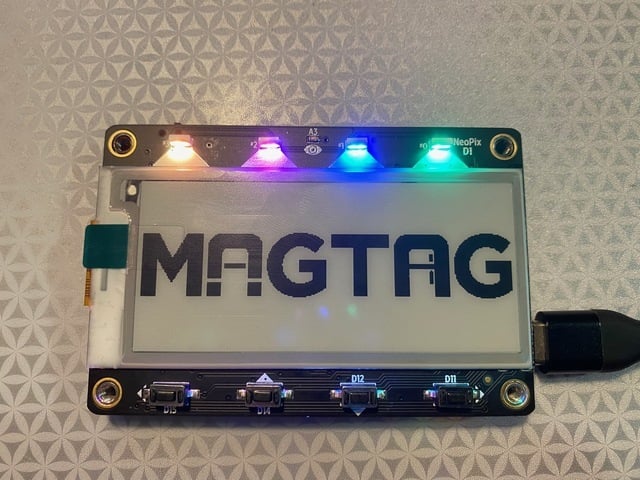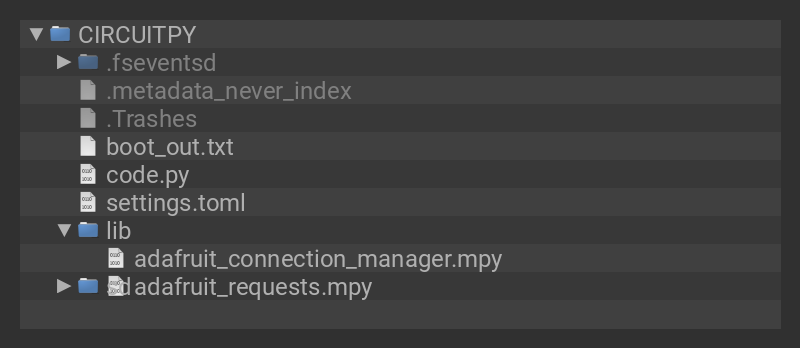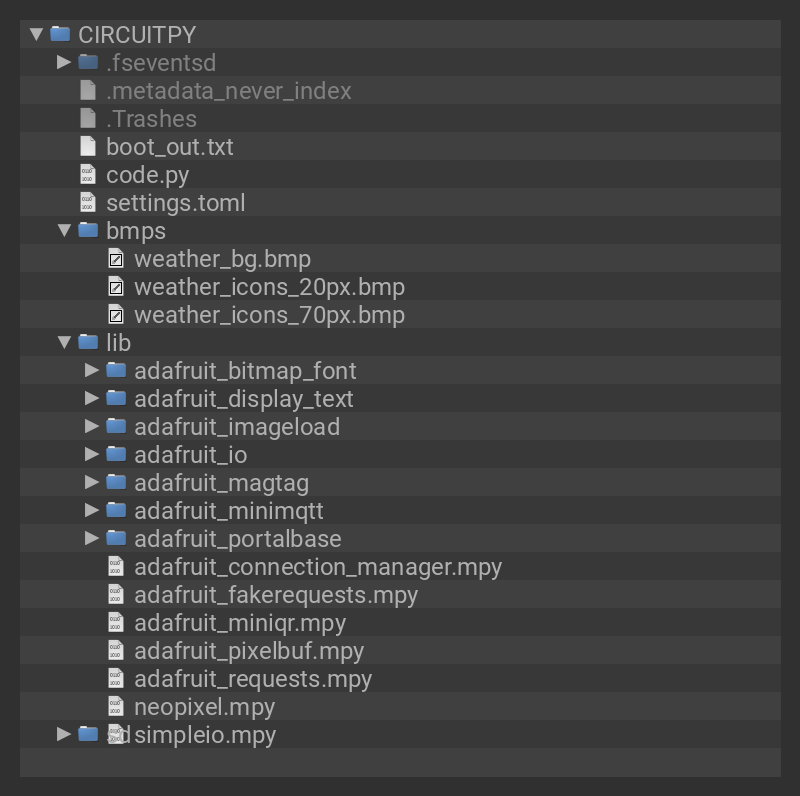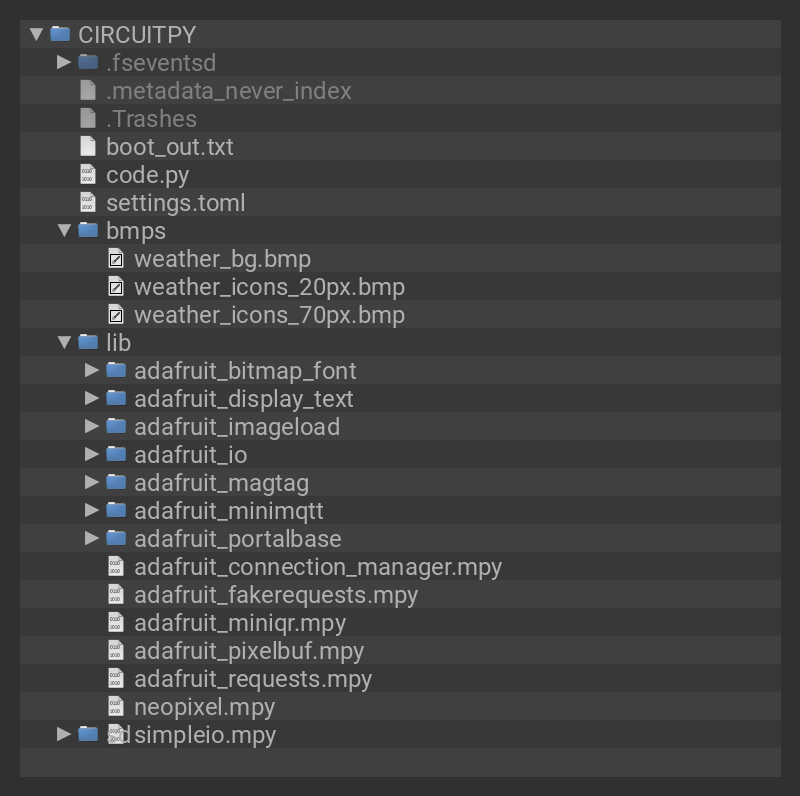Is the weather outside delightful? Or is it frightful? And what about in the coming days? In this guide we'll show you how to use an Adafruit MagTag to create a weather display for today and future conditions.
Using the MagTag's WiFi capability, we connect to the OpenWeatherMap service and get weather information. We then parse that and display it up in a nice summary.
Deep sleep is also used to only run the update once a day around midnight, so we can run for many weeks on one charge



OR these items are also available together as a kit:



































